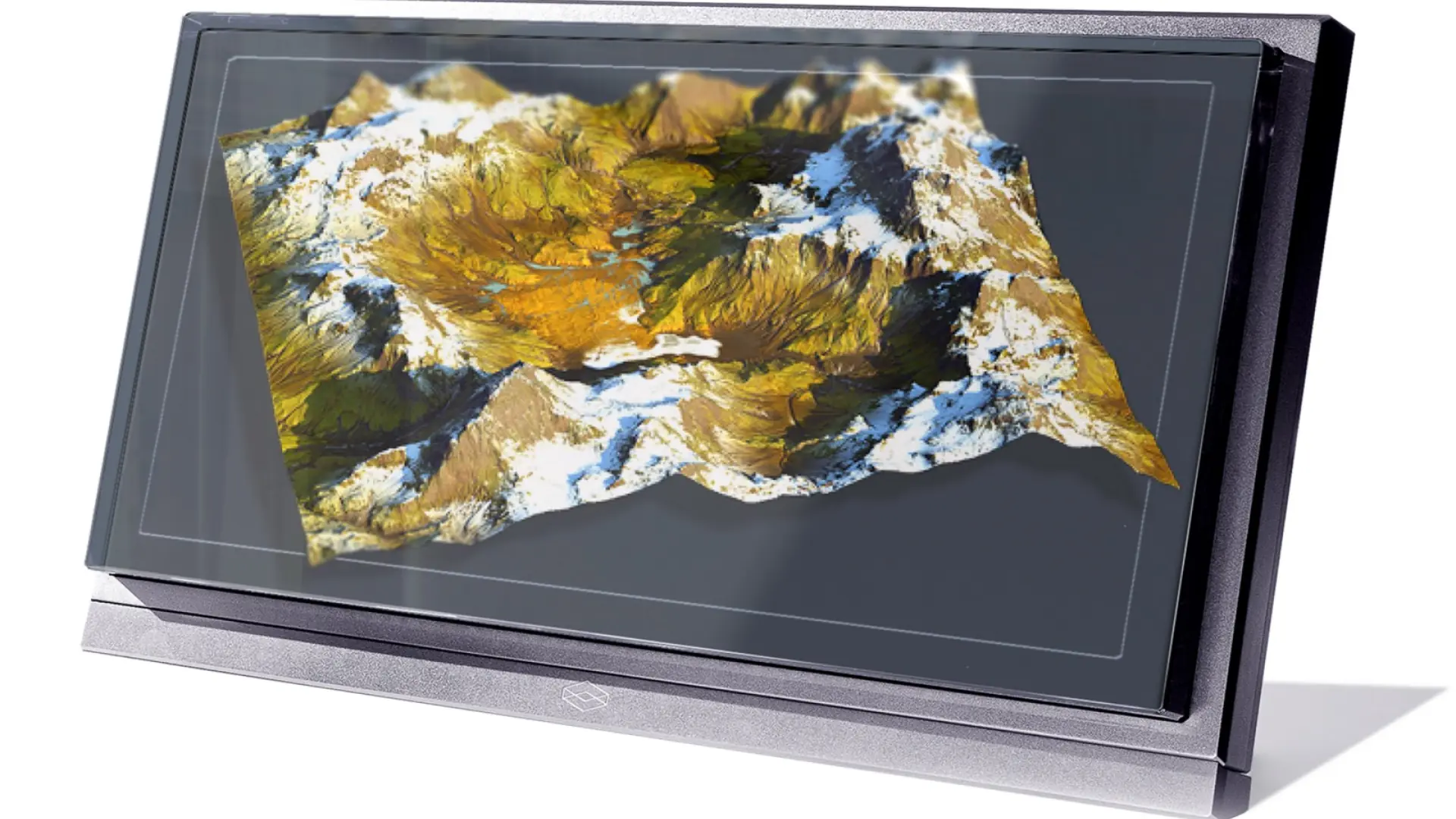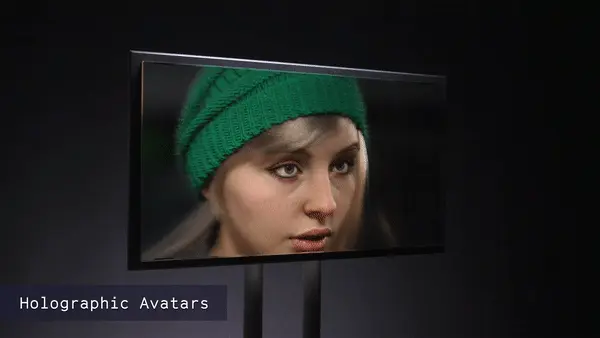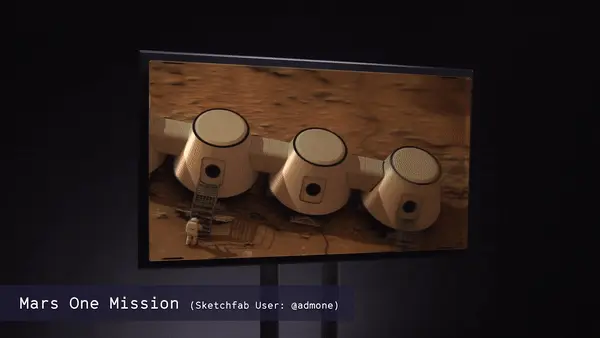Colossal Holograms
The world’s first large-format 8K holographic display is here, and it’s unlike anything that’s come before.

I’ve dreamed of holograms ever since I was 8 years old.
I was so obsessed that in high school my dad helped me build an optics table at the foot of my bed, just so I could capture laser interference patterns on glass slides— primordial, static, single color, but wonderful-nonetheless-holograms. Then while studying physics at MIT I searched high and low for the dynamic holographic displays from the sci-fi movies I loved growing up, only to leave heartbroken when I found out that they didn’t exist even at the world’s top labs.
That’s why five years ago, my co-founder Alex and I started a company to prove that holographic displays were possible. We named the company Looking Glass Factory after the looking glass that Alice stepped through. We hoped that one day we would find a way to build a holographic “looking glass” — a holographic window between the real world and 3D digital space. Today that dream becomes real.
Introducing the Looking Glass 8K Immersive Display, the world’s largest and highest resolution holographic display ever created.
At 32" in scale, the Looking Glass 8K is four times larger than any group-viewable holographic system that’s come before. It’s built on our proprietary 45-element light field technology, essentially reproducing the color (at over a billion-count color gamut), and directionality of every ray of light that the normal matter of our world would reflect or scatter — but in this case without the matter. This means that anything that is natively three-dimensional— whether it’s a 3D medical scan, a complex point cloud of a landscape, or a character from the next Pixar movie — can be displayed in the Looking Glass 8K in superstereoscopic three-dimensional glory to groups of people. Without requiring a VR or AR headset.

Over the past year our team has shipped thousands of our desktop Looking Glass Developer Kits, proving for the first time that light field displays could be commercialized on a mass production scale. The Looking Glass 8K is the next step. It is a system that’s specifically designed to meet the needs of enterprises looking for a deeply visceral, genuinely three-dimensional collaborative experience.


“3D maps on the Looking Glass [8K] display are immediately more engaging, immersive and collaborative. Quite simply it blew my mind.”
-Abhishek Tripathi, Head of 3D Terrain at mapping platform Mapbox

“Presenting anatomy and disease pathology in 3D on 2D screens happens every day, but being able to share 3D lightfield imagery with a Looking Glass to a clinical care team, residents/fellows, patients, and other allied health care workers is one exciting potential solution to translating seeing to knowing, fast.”
— GM of Additive Manufacturing at GE Healthcare, R. Scott Rader.
The Looking Glass 8K reproduces not only the true dimensionality of the real world but also critical details that are impossible to capture with 2D screens, like the glisten off of a character’s eye or the specular reflections off of a puddle in a virtual world. This is possible thanks to advanced hardware developed in-house and a new suite of holographic SDKs and utilities that ships with every system. With these tools almost any 3D content can be displayed to groups of people through the Looking Glass 8K, for programmers and non-programmers alike.

Up to a dozen people can use the Looking Glass 8K simultaneously. This is the simple but powerful promise of this system — it’s designed for groups, without any of the friction of VR or AR headsets. As a journalist remarked on seeing the Looking Glass 8K the first time, “If VR and AR headsets are like headphones for one person, this is a like a speaker for an entire room”.

Part of the reason the Looking Glass 8K is unlike anything else out there has to do with the scale and quality of the system — but it also has to do with the fact that the holograms aren’t bound by the physical volume of the device. They can extend in front of and behind the glass. This opens up entirely new possibilities for interaction with information that we are only beginning to explore.

I know most people don’t think holographic display like this is possible. That’s why we’ve setup demonstration units of the Looking Glass 8K in our HQ in Brooklyn and likewise in Hong Kong, San Francisco, and Tokyo. Head over to look.glass/8K to learn more and arrange for a private viewing to see for yourself.
While the the first advanced beta run of the Looking Glass 8Ks have sold out, starting today pre-orders are being accepted for the next production batch shipping Spring 2020. If your organization could benefit from large-format holographic display, we’d love to hear from you at bizdev@lookingglassfactory.com.
To the future!
— — — —
Inspired by movies in the 80’s and 90’s, the author Shawn Frayne has been reaching towards the dream of the hologram for over 20 years. Shawn got his start with a classic laser interference pattern holographic studio he built in high school, followed by training in advanced holographic film techniques under holography pioneer Steve Benton at MIT. Shawn currently works between Brooklyn and Hong Kong where he serves as co-founder and CEO of Looking Glass Factory.